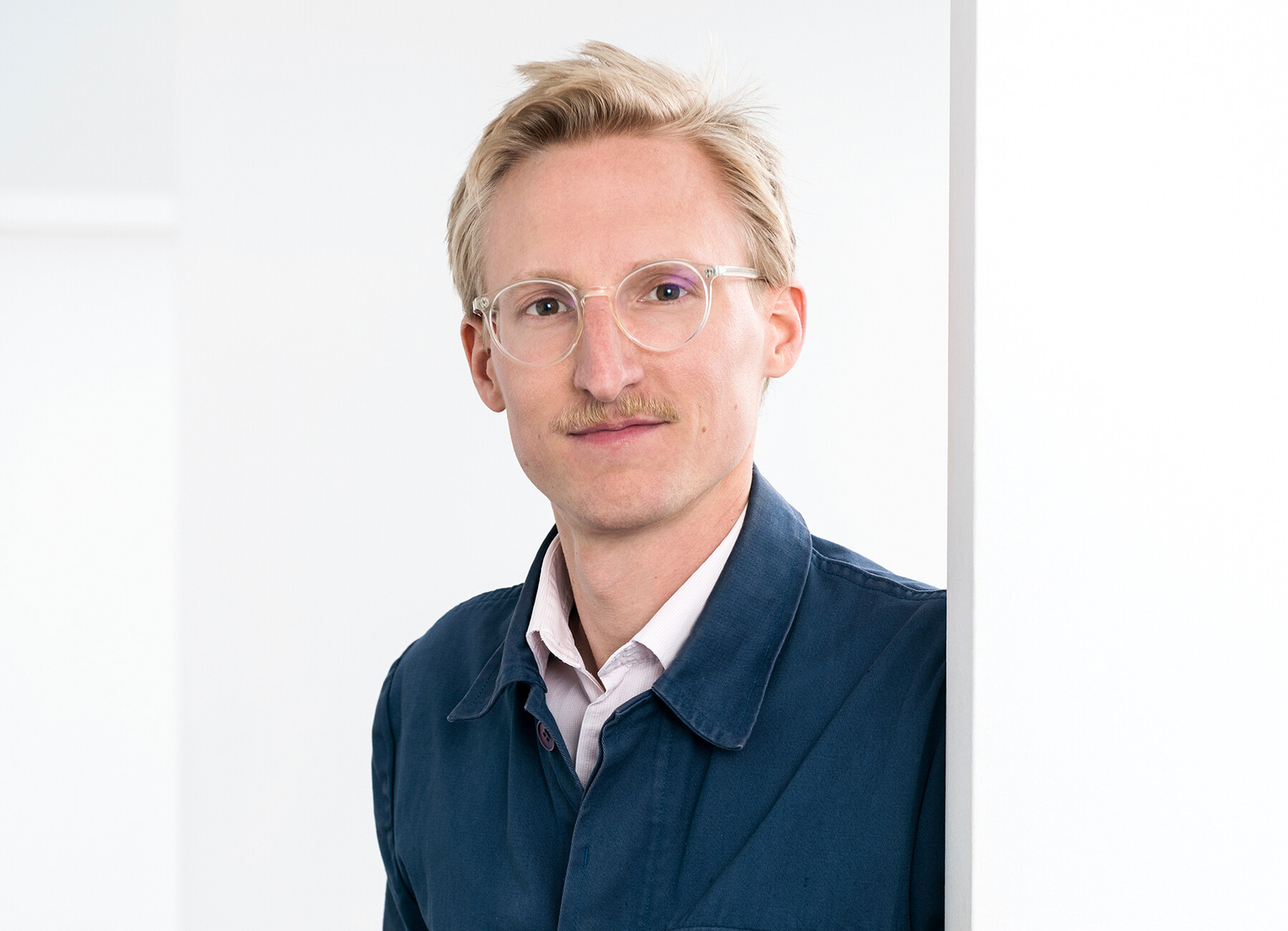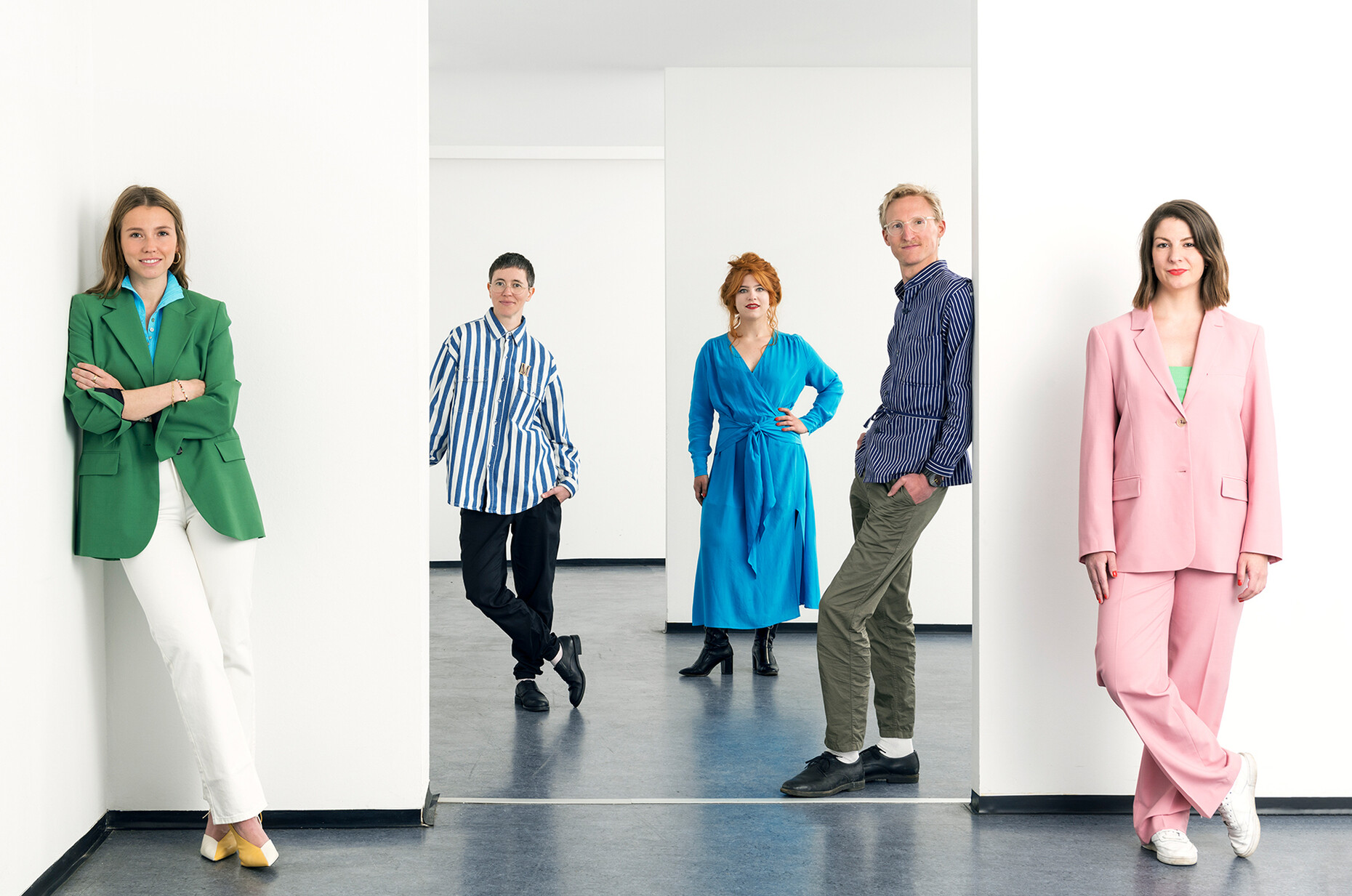Vienna Design Week
Setting sail
Anna Moldenhauer: Gabriel, what themes are you and your team currently working on for Vienna Design Week?
Gabriel Roland: We recently released our fold-out map – a map of Vienna with all the information on the 50 or so event venues with around 200 exhibitions, presentations, previews, talks, workshops, and tours. The map is a physical guide for all visitors, on top of which there will also be an augmented reality app once again. We have enhanced the functions since last year – preset tours can be selected, and individual tours planned. Anyone who finds themselves close to a point in the program will also be able to view further information.
Do you plan to expand the digital offering in future and thus make Vienna Design Week more of a hybrid event?
Gabriel Roland: I was already responsible for the digital program last year and am firmly convinced that it makes relatively little sense to transfer a physical program one for one into the digital sphere. That doesn’t do justice to the opportunities and the quality aspirations of both sides. Last year’s virtual festival headquarters was an entirely independent program item meant to expand the festival – and not to duplicate it. Vienna Design Week will tackle the digital aspect in future, too, but without necessarily becoming a hybrid event in that way.
You recently took over the baton as director of the festival from Lilli Hollein, who co-founded Vienna Design Week. Can you reveal anything yet on its future direction?
Gabriel Roland: For me, this year is primarily about getting my eyes on things. I’ve already been involved for a couple of years, but now I’m going to see the festival from a very different perspective. Popular formats of the festival, such as the exploration of social design in the field of urban work or the topics of craft and sustainability will remain, but the festival spirit is still dynamic, and the structure of Vienna Design Week should be, too. In this regard, the question naturally arises of what a design festival needs in terms of content. I would like to offer a conference format on this fundamental issue. That’s also one of the qualities of the festival – it gives us a chance to take a step back together in order to view the big picture.
Why did you decide to choose Brigittenau as a focus district this year?
Gabriel Roland: We are examining quite closely where there are interesting developments and dynamics in the city. In the 20th
district, Brigittenau, the erstwhile site of the Nordwestbahnhof station, was recently converted into an urban development project that includes housing for up to 15,000 new residents. This incision will change the district radically. For us as a design festival, it is very interesting to pinpoint the status quo and to take a look at where common perspectives arise. This is especially important in our examination of social design, but also in urban planning and architecture. Here, the Brigittenau represents a great location, because for many visitors it is not yet a focal point but at the same time has many qualities. It is located between two river worlds and is home to many a small oasis. At the same time, in terms of urban planning it is highly mixed and likewise relatively young, since it only evolved from unregulated countryside in the 19th century. In addition, the housing types and the population structure are very diverse. It is very interesting to see how this coexistence functions in relation to design.
That sounds exciting. As a visitor, you often only explore the districts around the city center and therefore miss so many interesting aspects of Vienna.
Gabriel Roland: It’s undoubtedly no different for a lot of the Viennese. Often there is no incentive or opportunity to explore the other districts in detail. Hence, for locals as well Vienna Design Week represents an opportunity to get to know the diversity of their own city. At the same time, we aim to give creatives possibilities to network and initiate sustainable projects in Brigittenau that will endure even after the festival.
The low threshold to the festival and the interactive offerings are certainly major strengths. Are there any other communicative aspects that are important to you?
Gabriel Roland: The aspect of the platform is very important. We want to highlight how the tools design gives us accompany all of us throughout our lives. When I use the term “design” in communication, it often triggers preconceptions in people who have not yet discovered their role in the discourse. It is therefore important to prompt educational outreach and explain everything that design might be – whether that’s in the public space or as an industrial product, an everyday item, or a form of communication. Ultimately it is also a kind of system with which we organize our coexistence. We are trying to normalize this discourse and to integrate people who were not previously involved. That’s why we are inviting designers and manufacturers to appear at Vienna Design Week and to engage with visitors so that there is mutual understanding and appreciation. That’s something I think is crucial because that appreciation is lacking in all areas. The education program should also offer as many inroads as possible into the topic of design. That’s why visits to the festival are still free of charge and why we work a lot with educational institutions. Not everyone has to be involved in the design process, but relevant communication is necessary if people are to be responsible consumers. If we don’t engage with the design decisions of society as a whole, then we miss out on an opportunity to help shape them.
How, in your view, is the design scene in Vienna developing right now?
Gabriel Roland: Vienna has some great local heroes who have firmly established themselves as producers of design and have international networks. Furthermore, the city offers outstanding educational institutions that reliably nurture up-and-coming talent. I get the impression that Vienna is increasingly becoming an attractive city for people from outside who want to settle here. I think that also has something to do with the high quality of life in Vienna and the affordable rents. In the Vienna Business Agency, we also have an innovative funding sector that ensures creative ideas will actually be implemented. The term “design” encompasses a huge range of designers – and it is precisely because we have this breadth and, at the same time, a certain excellence in industry, craftsmanship and the digital sphere that there are many points of contact for the mediation work. In the young scene, the collaborative element is currently growing in importance, ranging from shared studios to a cooperative basic approach. That’s why we’re looking at how we can best bring all these aspects to light in a festival.
Is there anything you perceive as a challenge in the education effort?
Gabriel Roland: The difference between a festival and a trade fair or an event is that its success cannot be measured in figures. A festival offers an atmosphere with lots of launchpads for a shared context, and participation in such an event signals a basic open-mindedness towards the design scene, which brings long-term advantages. Manufacturers have the opportunity to introduce themselves and their services while likewise benefiting from the lively creative scene in Austria. This is an organic process and is not really channeled. In order to generate new points of view, you need to get more involved in the mediation work.
You studied textile design and have a regular fashion column in pop-culture magazine The Gap. How will your sense for fashion impact on Vienna Design Week?
Gabriel Roland: I’m keen on the topic, but Vienna Design Week won’t suddenly change its thematic area – there are other festivals which can specialize in that. One key point I took away from my studies is an enjoyment of experimentation. That will certainly also flow into the orientation of Vienna Design Week.







